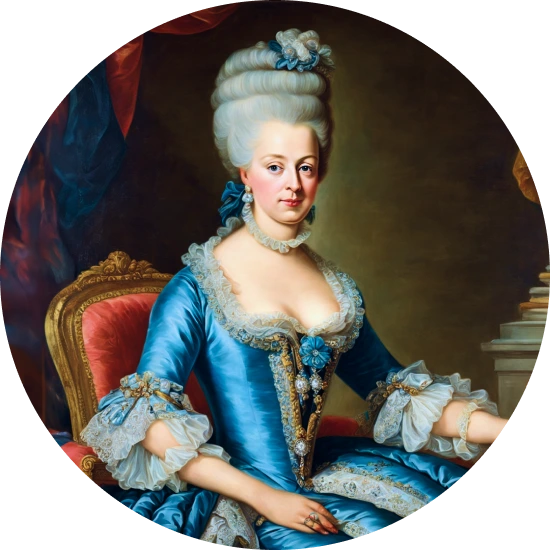The Decennial U.S. Census data also provides insight into the ethnic identity associated with the Kenner surname. From 2000 to 2010, the number of individuals identifying as Asian/Pacific Islander and those reporting two or more races saw increases of 45.61% and 19.80%, respectively. The percentage of those identifying as White also increased slightly, going from 64.27% to 66.62%. Meanwhile, there was a notable surge in those identifying as Hispanic, with a growth rate of 103.15%. Conversely, the number of people identifying as Black and American Indian and Alaskan Native decreased by 13.57% and 11.11% respectively during this period.
| 2000 | 2010 | Change | |
|---|---|---|---|
| White | 64.27% | 66.62% | 3.66% |
| Black | 31.33% | 27.08% | -13.57% |
| Hispanic | 1.27% | 2.58% | 103.15% |
| Two or More Races | 2.02% | 2.42% | 19.8% |
| Asian/Pacific Islander | 0.57% | 0.83% | 45.61% |
| American Indian and Alaskan Native | 0.54% | 0.48% | -11.11% |
NomOrigine computes an ancestry breakdown for each customer. People may have ancestry from just one population or they may have ancestry from several populations. The most commonly-observed ancestry found in people with the surname Kenner is British & Irish, which comprises 49.3% of all ancestry found in people with the surname. The next two most common ancestries are French & German (18.3%) and Nigerian (5.8%). Additional ancestries include Ashkenazi Jewish, Scandinavian, Ghanaian, Liberian & Sierra Leonean, Eastern European, and Spanish & Portuguese.
Ready to learn more about your ancestry? Get the most comprehensive ancestry breakdown on the market by taking our DNA test.
| ANCESTRY BREAKDOWN | COMPOSITION |
|---|---|
| British & Irish | 49.3% |
| French & German | 18.3% |
| Nigerian | 5.8% |
| Other | 26.6% |

One of the many populations harboring members of haplogroup O1b1a1a1a1 is the Cham ethnic group, a group of people who speak Austronesian languages in Mainland Southeast Asia. Austronesian languages make up a language family that is extremely large and widespread, comprising over 350 million people on islands such as Madagascar, Easter Island, and many others. However, Austronesian languages are less common on mainland Asia, with a notable exception being the Chamic language. Research suggests that ancestors of the Cham people migrated from Southeast Asian islands to the mainland around the year 500 BCE, and that early Cham populations quickly began mixing with indigenous southern Vietnamese populations. As a result, the Chamic language now has words that were borrowed from languages spoken by indigenous Vietnamese people. It is likely that an ancestral Kinh population was one of the populations that mixed with the Cham people shortly after their migration to mainland Asia.
Because it is so dominant in the general European population, haplogroup H also appears quite frequently in the continent's royal houses. Marie Antoinette, an Austrian Hapsburg who married into the French royal family, inherited the haplogroup from her maternal ancestors. So did Prince Philip, Duke of Edinburgh, whose recorded genealogy traces his female line to Bavaria. Scientists also discovered that famed 16th century astronomer Nicolaus Copernicus traced his maternal lineages to haplogroup H.

Chargement de la carte...
Enter the surname you are looking for below:
The surname "Ken Alew" is of unknown origin and does not appear to have a specific linguistic or cultural background.
The last name "kena pusal" appears to have originated in India. It is possibly a combination of two separate surnames or words.
The last name "Kenaghan" is of Irish origin. It is derived from the Gaelic surname "Mac Coinnigh," which means "son of Coinneach." The name Coinneach itself comes from the Gaelic w...
The surname Kenan has roots in various regions and cultures due to its multiple possible origins. Here are a few possibilities: 1. Scottish: A locative name derived from the place...
The last name "Kenanah" is of Arabic origin. It is derived from the name of a prominent tribe in pre-Islamic Arabia called Banu Kenanah. The tribe was respected for its bravery and...
The last name "Kenangan" originates from Indonesia. It is derived from the Indonesian word "kenangan" which means "memory" or "remembrance".
The last name Kenawy is of Egyptian origin. It is a common surname in Egypt and is derived from the Arabic word "kenawi," which means someone who is a native of the town of Kenawat...
The last name Kencan is of Indonesian origin, specifically originating from the Javanese language. It is most commonly found in Indonesia.
The last name Kencheri is of Arabic origin. It is a surname commonly found in Arabic-speaking countries such as Morocco, Algeria, and Tunisia.
The last name "Kencono" is of Indonesian origin. It is derived from the Javanese word for "silver" or "money." It likely originated as a nickname for someone who was wealthy or had...
The surname Kendali is of English origin. It is derived from the Old English personal name Cyndel and the word leah, which means "woodland clearing." This surname would have origin...
Please wait, data loading. It may take 1 minute or 2...
The surname Kenderian is of Armenian origin. It is derived from the given name Kender, which means "God's messenger" or "angel" in Armenian. The suffix "-ian" is a common Armenian ...
The surname Kenea has its origin in the country of Kenya. It is derived from the Kikuyu language and means "to build" or "to construct."
The last name "Kenee" is of French origin. It is derived from the Old French personal name "Cene", which means "war" or "battle". Over time, this personal name evolved into the sur...